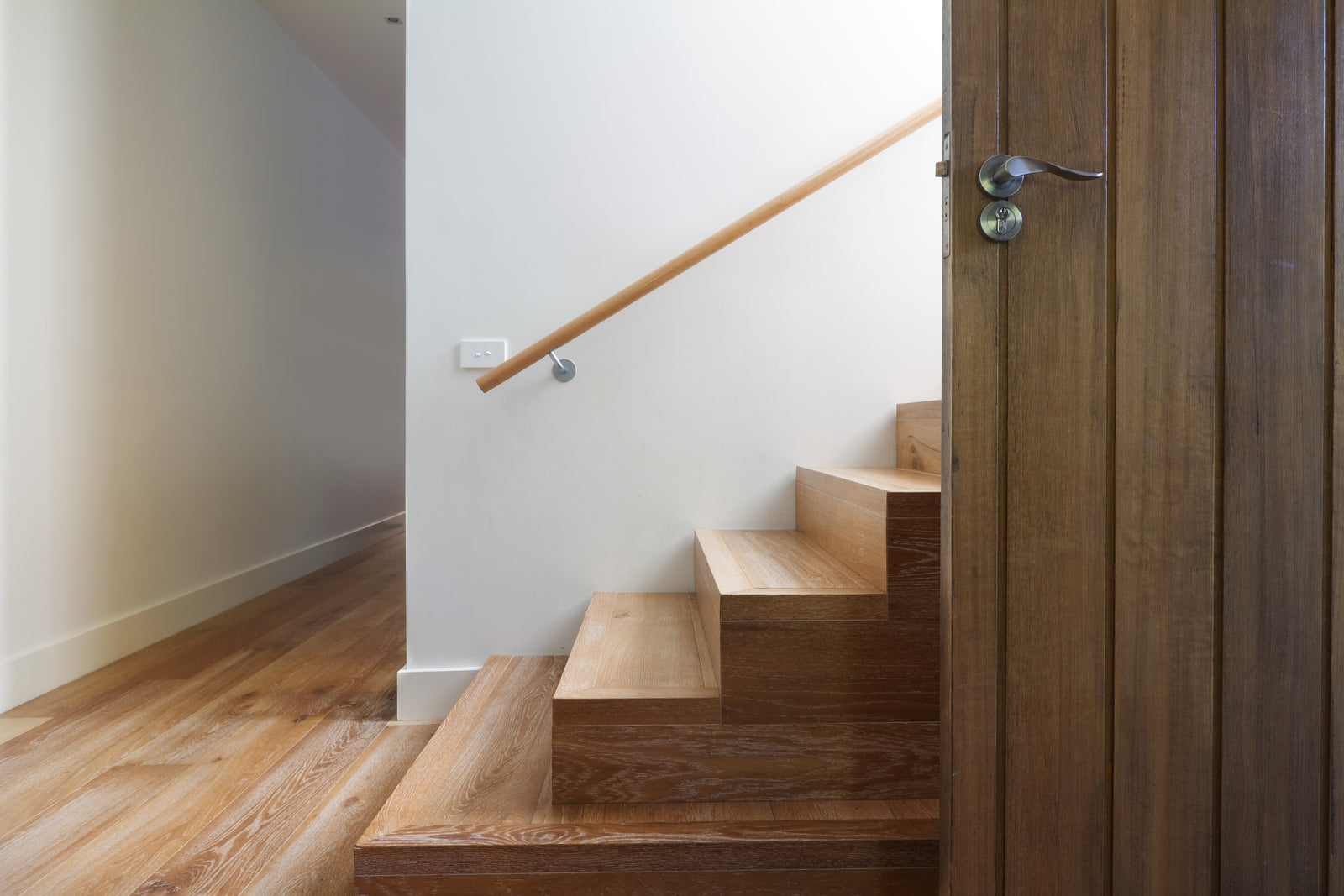Stair handrails are a safety feature that helps you keep your balance while walking downstairs and to give yourself a boost when walking up them. But they also contribute to the look of the stairs, giving the area a finished appearance. Fitting them can be a little challenging, with the shapes, angles and heights involved. So here’s our top tips in how to fit a stair handrail.
Fitting a stair handrail - the basics
Before you start with buying that Richard Burbridge handrail kit you took a shine to or measuring up for a nice quality oak handrail, there are a few basics to consider.
First, do you want one handrail or two? One is the most common option but if you have anyone in the house with mobility issues, then one on either side will be very welcome. Some sources say that if your stairs are less than one metre wide, a single handrail is enough but wider than this and you should have two. The first two steps don’t need a rail.
If you have only one, there’s no right or wrong answer as to which side you attach it to but the most common is to have it on your right-hand side as you go down the stairs.
The other thing to consider is what you are attaching it to. If there’s a solid wall, then the job is a simple one. However, if there are railings, changes in angle or other complications, there’s a little more measuring and figuring out to be done.
Measuring for the handrail
After you have decided how many and where the handrails will be fitted, you can look at measuring it and deciding what types you want.
First, you want to measure the overall length of the staircase. To do this, measure up from the floor at the bottom of the stairs by a specific measurement.
Handrails are usually 900mm to 1000mm from the pitch line. Imagine this as a line running diagonally along the top of the stairs.
Measure the same at the top of the stairs and then measure down the stairs between these two points. This is the length of the stairs and the length you’ll need your handrail, although you might want it to be a little bigger.
To decide how much bigger, count how many stairs there are and divide the length by this number. This gives you the number of treads and you simply need to add one of these to the length measured to get the right length for the handrail.
Fitting the stair handrail
Now you are ready to pick up your handrail and start fitting it. There are three main types of handrail available:
Mopsitck handrails - individual fittings, often round in shape that screw into the wall and into the rail, usually with round rails
Pig’s ear handrail - all in one style with no separate fittings but a shape that looks a bit like a pig’s ear
Profiled handrail - shaped rail with a gap at the bottom for the fitting to sit in and then connect to the wall
Fitting a handrail to the wall
Start by measuring at least 850mm from the front of the bottom tread of the stairs and the same at the top. Allow up to 50mm for the thickness of the handrail to get it at the right height. Mark the positions and use a screw to temporarily show the spots.
Stretch some string between the points and mark the point from the second step up and down with a diagonal line. Remove the temporary screws and string. Divide the space between the marks from the second step up and down by the number of brackets, usually having them no more than 1 metre apart. Four is a normal number.
Add the first bracket so it sits with the lowest screw on the line for the second step up. Repeat the process up the wall and then add wall plugs. Attach the brackets to the wall then mark up where on the rail they need to go. Attach the brackets to the handrail, removing from the wall if needed then mount.
The process is similar for all three styles of handrail, simply adjust the final steps to the type of rail you have chosen.
Finishing the rail
Once you have measured and marked everything, it can be best to remove the handrail from the wall if you want to paint or stain it first. Then you can return it to the fittings and it will be ready for use.




